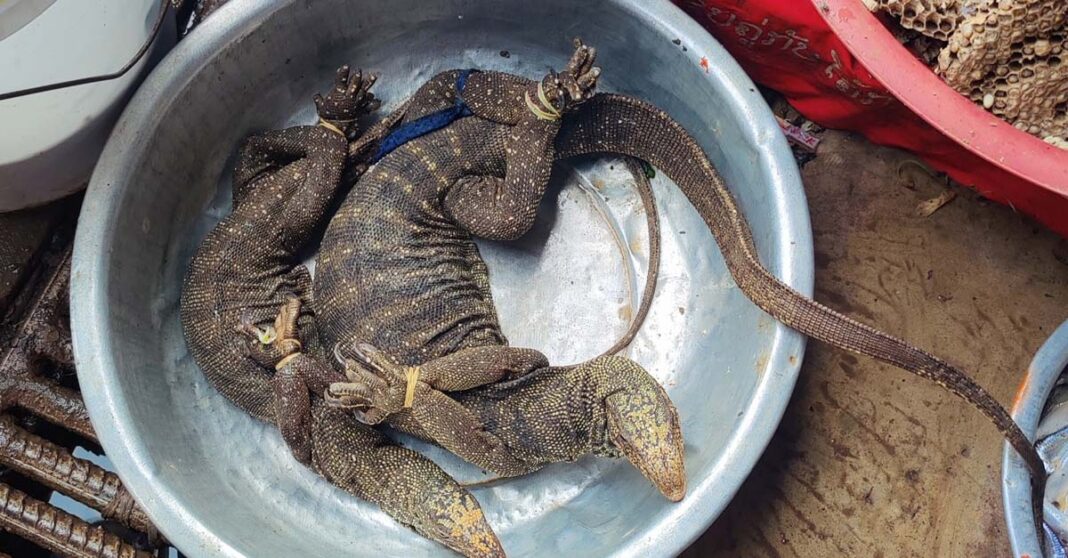Wildlife on display at markets in Vientiane Capital remains a common sight, despite efforts by authorities to curb the practice.
Vendors at fresh markets in the nation’s capital have been found selling protected animals, live and in parts, violating strict wildlife consumption laws and regulations.
While experts have addressed the importance of wild animals to the ecosystem and educated communities about the dangers of wild animal consumption, the practice is tough to stamp out.
“There is a continued demand from consumers, which leads to hunting, trafficking, and sale at markets,” says Manoly Sisavanh, Deputy Country Director of WCS.
“Our objective in Laos is to strengthen the capacity of local wildlife law enforcement and judiciary agencies by helping build capacity, raise awareness, and improve inter-agency coordinated actions. We also work with government partners to address wildlife crime occurring within Laos and across its borders,” she says.
Manoly explains that the problem of wildlife sold at markets is complex. While local authorities show an increased commitment to monitoring and inspection, the trade can only be genuinely eradicated by proper bans on the sale of wildlife at markets, as well as protection at the source.
Meanwhile, many people in rural areas of Laos still forage and hunt, relying on wild animals for extra nutrition, and some also believe that eating wild animals has medicinal or health benefits.
But the opposite is often true, with diseases spreading to humans from wild animals more often as we encroach further into habitats previously uninhabited by humans.

A recent study funded by the European Union and published in the journal Emerging Infectious Disease tested animals sold for food from several trade sites and roadside stalls around Laos.
Researchers found that more than 20% of the animals tested were positive for zoonotic diseases, infectious diseases which originate in animals and have the ability to infect humans and even kickstart a pandemic.
According to the study, wildlife hunters, sellers, and consumers are the three groups of people most likely to be infected by diseases found in wildlife.
To try to change attitudes and raise awareness, a new campaign promoting the One Health approach has been launched in Laos. One Health is a holistic approach to the prevention and elimination of the spread of disease based on a principle that acknowledges human health as heavily linked to animal and environmental health.
The One Health Laos campaign promotes wildlife as playing a vital role in maintaining a balance in the ecosystem, from dispersing seeds to improving soil health and balancing food sources.
Long List of Threatened Species in Laos

The last freshwater Irrawaddy dolphin living in waters bordering Laos died in February this year, following the tiger onto the list of animals believed to be extinct in Laos.
And while some populations have increased, such as the Eld’s deer and the Siamese Crocodile in Savannakhet Province, other animals have not been so lucky.
A concerted effort comprised of awareness raising, monitoring and inspection, and real enforcement may be able to save the animals that remain, including rare species unique to the region, such as the Saola, Annamite Striped Rabbit, the northern white-cheeked gibbon, and the Indochinese turtle.



